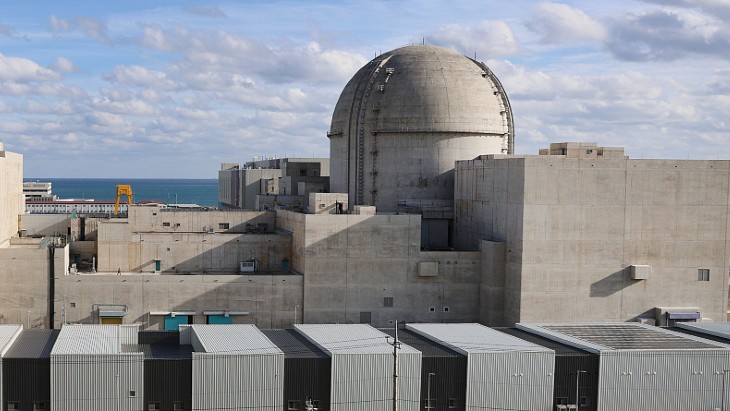The two companies have now announced the conceptual design for the transportable and sea-based small modular reactor (SMR) which "can generate safe, affordable, and reliable electricity at grid-scale at any coastal location worldwide" with the design to be used "for engagement with utilities, regulators and shipyard manufacturers".
Prodigy's SMR Marine Power Station would be able to house between one and twelve NuScale Power Modules, with a total output of up to 924 MWe. The marine facility's design is standardised with the intention of allowing "deployment at a wide variety of sites and for serial manufacturing".
The marine facility, once it has been transported to the desired location, will be fixed in place within a protected harbour, before being connected to shore-based systems. At the end of its life the intention is the marine facility would be transported back to a specific centre for decommissioning.
John Hopkins, NuScale Power President and CEO, said: "Utilisation of a transportable marine facility will enable us to deploy the NuScale Power Module at more locations around the world. By combining Prodigy’s technologies with NuScale’s safe, scalable, and innovative SMR design, we are confident in our ability to deliver our carbon-free and cost-competitive SMR technology globally."
Mathias Trojer, Prodigy Clean Energy President and CEO, said that by packaging the NuScale reactor "into Prodigy’s marine facility, we will offer countries a near-term solution to address energy security and to decarbonise their economies, including replacing coal-fired plants - many of which are located at the coast".
The two companies say advantages include expedited delivery, reduced capital expenditure, minimised site preparation, reduced environmental impact as well as simplified site recovery.
There has been a growing trend in future floating SMR offerings, as set out in the International Atomic Energy Agency's most recent progress report on SMR developments with the attraction that they can be completely built in a shipyard factory, delivered to remote sites, or exported to other countries as a marine plant for plug-and-play access to electricity and heat supply.





_72306.jpg)


_49562.jpg)





